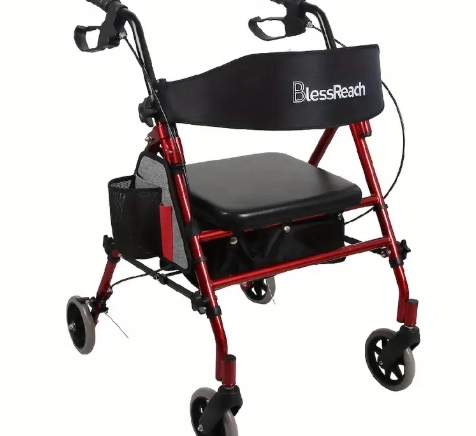
Cookies & Privacy
This website uses cookies or similar techonoglies to enhance your browsing experience and provide personalized recommendations. By contrinuing to use our website, you agree... Cookie Policy
 Caricom Survival
Caricom Survival
The Caribbean Community (CARICOM) is a bloc of 15 member states with shared cultural, economic, and trade ties. From Jamaica to Trinidad, Belize to Guyana, these nations face a common challenge: access to affordable, high‑quality medical equipment.
As the demand for dialysis machines, ventilators, hospital beds, surgical instruments, and imaging technology continues to grow, individual countries often negotiate separately with suppliers—leading to fragmented pricing, small‑volume orders, and limited leverage.
But there’s a better way.
By banding together through joint procurement initiatives, CARICOM members can pool demand and unlock bulk discounts, better warranties, and shared maintenance contracts. This approach doesn’t just save money—it strengthens health systems and builds regional self‑reliance.
Healthcare infrastructure in the Caribbean has made great strides, but supply challenges persist. Many hospitals, clinics, and dialysis centers struggle with:
High costs for specialized equipment like dialysis machines and anesthesia units
Maintenance delays due to lack of spare parts
Inefficient procurement systems that duplicate effort across islands
Small order volumes that result in weak negotiating power
By centralizing procurement under a CARICOM umbrella, the region could achieve economies of scale similar to large health networks in Europe or Asia.
1️⃣ Lower Prices Through Volume Discounts
Suppliers of dialysis machines, ventilators, and surgical tables often tier their pricing.
Example: A single dialysis machine might cost US $18,000–$20,000. But if CARICOM orders 50–100 machines collectively, that price can drop by 10–25%.
2️⃣ Better Service & Maintenance Contracts
When hospitals across multiple CARICOM countries buy equipment individually, they often receive limited support. A regional procurement agreement could include:
Shared maintenance teams
Stockpiled spare parts in one or two strategic locations
Faster servicing and lower downtime
3️⃣ Streamlined Training for Staff
Bulk deals can include training packages for technicians and medical personnel—ensuring staff across the region know how to operate, maintain, and troubleshoot new equipment.
4️⃣ Enhanced Supplier Relationships
Bulk purchasing means suppliers take the region seriously. CARICOM could negotiate priority access to new technology, early shipment slots, and first rights on trade‑in programs.
5️⃣ Shared Shipping & Logistics
Instead of paying freight for small, individual shipments to each island, a consolidated order can ship in containers to one port (e.g., Kingston, Bridgetown, or Port of Spain) and then distribute via intra‑regional logistics networks.
Bulk purchasing should start with high‑demand, high‑impact items for hospitals and clinics across the Caribbean.
Dialysis Machines & Kits
Chronic kidney disease is on the rise in the Caribbean. Dialysis machines, filters, and disposables are essential for treatment. Bulk purchasing can also include maintenance contracts and bulk consumable discounts.
Hospital Beds & Mattresses
Many hospitals are upgrading to ICU‑ready beds with adjustable features and infection‑resistant materials.
Imaging Equipment
X‑ray units, ultrasound machines, and CT scanners are expensive but vital. Regional bulk deals could include shared warranty services and mobile diagnostic units.
Operating Room Equipment
Anesthesia machines, surgical tables, sterilization autoclaves, and lights.
Critical Care Equipment
Ventilators, infusion pumps, defibrillators—many purchased urgently during COVID‑19 at premium prices. A unified system ensures better pricing and preparedness.
Lab & Testing Equipment
Blood analyzers, chemistry equipment, and portable labs for public health systems.
Step 1: Create a CARICOM Medical Procurement Board
This body would coordinate needs assessment, consolidate orders, and negotiate with suppliers.
Step 2: Build a Centralized Procurement Platform
An online portal could manage tenders, bids, and supplier agreements—similar to an “Amazon for CARICOM hospitals.”
Step 3: Identify Strategic Partners
Manufacturers like Siemens, Baxter, Fresenius, GE Healthcare, and Philips already supply the region. CARICOM could secure framework agreements for dialysis units, surgical suites, and hospital tech.
Step 4: Establish Shared Warehousing & Service Hubs
Parts and consumables for equipment like dialysis filters or ventilator tubing could be stocked in Belize, Barbados, or Jamaica—cutting downtime for repairs.
Step 5: Secure Financing Models
Bulk deals could be financed via:
Regional Development Banks (e.g., CDB)
Public-private partnerships
Leasing models where CARICOM rents equipment collectively
CARICOM can draw on global examples:
PAHO Revolving Fund – pools vaccine orders for Latin America & Caribbean nations.
EU Joint Procurement – Europe buys antivirals and PPE collectively to secure better terms.
A CARICOM Medical Equipment Pool could function similarly—negotiating multi-country tenders for dialysis machines, hospital beds, and diagnostic systems.
✅ Lower Healthcare Costs for Patients
When hospitals save money, they can redirect funds to improved patient care, staffing, and community programs.
✅ Stronger Regional Bargaining Power
Suppliers take large, organized buyers seriously. Instead of negotiating 15 separate contracts, they see CARICOM as one major client.
✅ Emergency Preparedness
By owning shared stockpiles of ventilators or dialysis supplies, the Caribbean won’t face the same shortages seen during COVID‑19.
✅ Job Creation & Local Industry Development
A procurement board could foster partnerships with regional distributors—and even lay groundwork for local assembly of beds, tubing, or sterilizers.